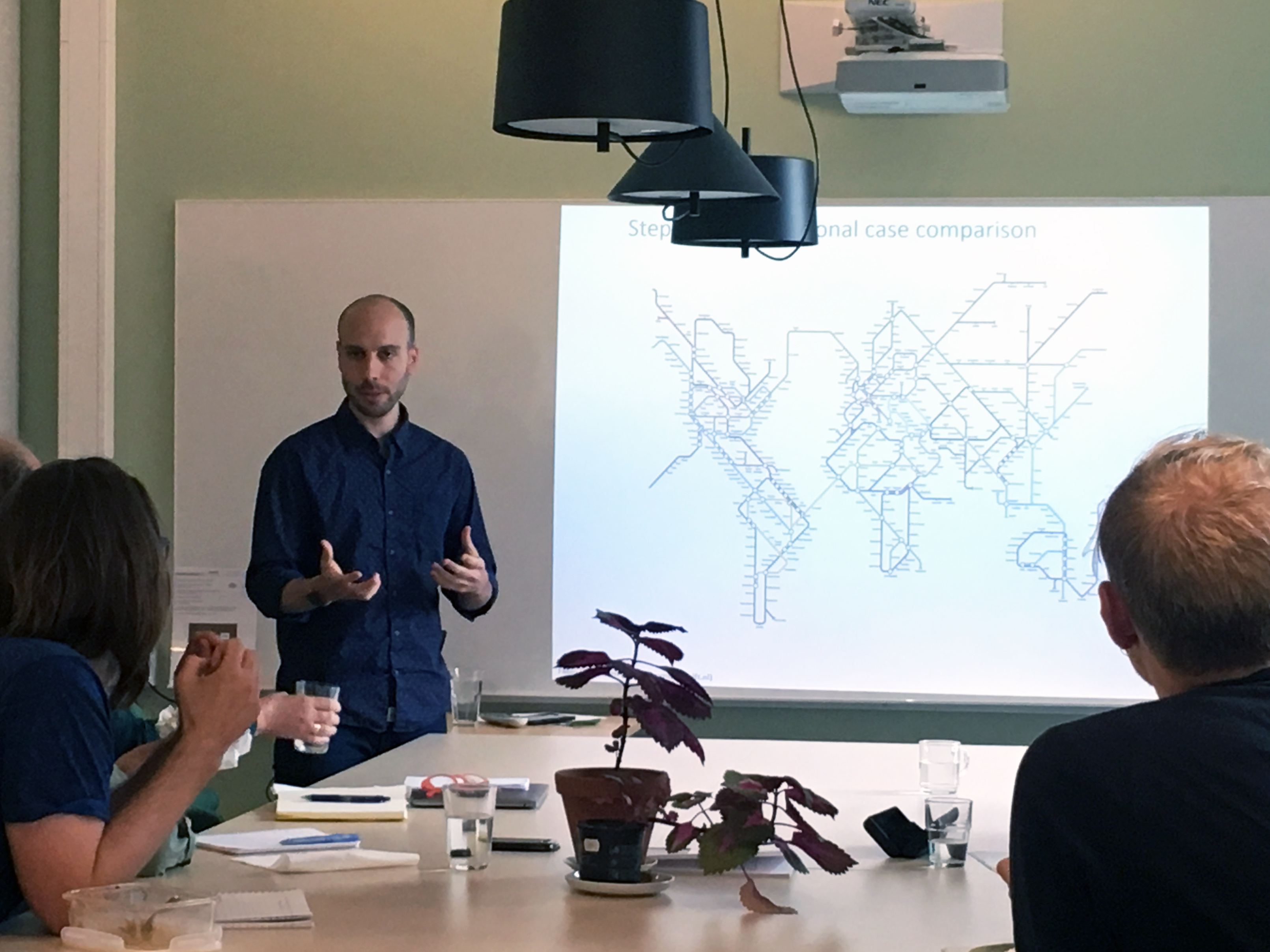Fabio Hirschhorn: "Financial performance goals appear as a main policy driver in public transport"
Fabio Hirschhorn's research concerns organisation and governance of public transport. In 2019, he visited Mistra SAMS, collaborated with researchers at K2, and presented some of his findings at a kitchen talk. Fabio Hirschhorn finished his PhD studies and defended his dissertation at TU Delft in April 2020.

Your PhD work is in two "parts", the first part focusing on formal institutional frameworks in public transport governance, and their influence on performance outcomes - what have you learned?
- Public transport is a complex multifarious system in which technical elements and multiple actors with diverse and conflicting values coexis. As a result, the study of public transport governance, and particularly the relationship between governance and performance, should take a complexity-informed approach, recognising that performance outcomes in public transport are the result of the interplay between multiple systemic elements and context, rather than the sum of individual policy interventions.
The analysis in part 1 first identifies the most critical performance indicators and strategic elements of formal institutional frameworks according to international public transport experts. In relation to performance indicators, system-wide metrics such as user satisfaction, cost-recovery, and modal split are selected as preferred measures for a strategic assessment of public transport. Little emphasis has been given to measures of environmental sustainability and spatial availability of public transport. Concerning features of organisational form driving performance outcomes, integration emerged as the central dimension: policy integration between public transport and other sectors, single integrated planning authority, as well as ticket and fare integration were highly rated by consulted experts.
Secondly, Part 1 identifies three alternative sufficient combinations of governance elements conducive to better modal split and cost-recovery of public transport. Results suggest that integration between land-use and transport and an integrated planning authority are central for enabling higher modal split, whereas higher cost-recovery is associated to the way agency over funding and risk allocation strategies shape incentives for savings and/or revenue generation.
The second part was about informal institutional frameworks, key actors and policy stragegies. Again, what are your key take-aways?
- Part II first analyses how the interplay between formal frameworks, informal institutions, and individuals’ agency can contribute to making public transport more attractive in relation to other modes of transport. Findings indicate that formal frameworks, informal institutions, and key actors co-exist and interact in complementary, substitutive, and accommodating manner; they work alongside each other to facilitate collective decision-making on issues ranging from public transport supply planning, integrating land use and transport, policy implementation capacity, and to dealing with budget constraints.
Secondly, Part II examines governance responses to Mobility as a Service (MaaS) and the interactions between public transport systems and MaaS. The analysis suggests six governance approaches to MaaS across studied cases: analyser, architect, convener, experimenter, lawmaker, and provider. These basic models encompass strategies ranging from hands-on strong intervention to information collection efforts. These six approaches indicate that public transport regimes seek to control the apparent disruptive potential of MaaS by incrementally absorbing innovations; to this end, public sector actors adopt governance responses that tend to reproduce existing institutionalised ways of doing and prevailing logics. Furthermore, the six approaches reveal that key concerns amongst players in the mobiliuty eco-system are market share and revenue streams.
Overall, Part II shows that financial performance goals appear as a main policy driver in public transport, eclipsing environmental and social sustainability concerns.
You visited Stockholm in September 2019 and met Mistra SAMS researchers, are you working on any projects with Mistra SAMS now?
- I have already worked with partners from Mistra SAMS at K2 in Lund. Furthermore, I had the privilege to have Karolina Isaksson as one of the examiners in my PhD committee and I hope to be able to continue to collaborate with her and her team in the future. I also hope that, once overall travelling circumstances are normalised, I can return for a second residency period with Mistra SAMS.
What was most useful about visiting Stockholm and Mistra SAMS?
- I received very valuable feedback in relation to the presentation of my research, strengthened the links with researchers with similar interests, expanded my network, and initiated discussions to work together on new projects.
What are you going to do now?
- I am a post-doctoral researcher at TU Delft in the Netherlands and continue to be involved in research concerning the governance of urban mobility. My main topics of interest are understanding processes of depoliticisation, the role of key individuals and champions, and mobility justice.
Articles by Fabio Hirschhorn: